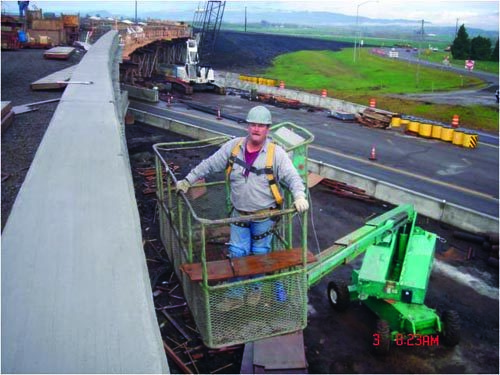The hazards of aerial lift work

Workers using aerial lifts can be injured or killed if they don’t know how to operate them safely. According to the Center for Construction Research and Training, also known as CPWR, about 26 workers die every year using aerial lifts. Causes range from electrocutions, falls and tip-overs to being caught between the bucket or guardrail and an object.
First steps
Before attempting to use an aerial lift bucket, CPWR states, workers should thoroughly inspect all operating and emergency controls, as well as guardrails, fall protection gear and any other items specified by the machine’s manufacturer. Check that the lift has no missing or broken parts. Then, survey the area where the lift will be used. Aerial lifts should be used on level surfaces that won’t shift. Look for hazards such as overhead power lines, drop-offs, holes and other obstructions. Finally, be sure to set outriggers, wheel chocks and brakes, even if the lift is on a level surface.
Supervisors should ensure any aerial lift operator or worker is trained, qualified and experienced with the model he or she will be using.
Incident prevention
When operating an aerial lift or working in a lift bucket, ensure the platform’s chains or doors are closed, don’t exceed the lift’s load capacity limits, and place warning cones and signs around the lift when working near traffic. Other tips from CPWR:
Prevent electrocutions: Stay a minimum of 10 feet away from overhead power lines, and be aware that insulated buckets won’t protect a worker if electricity has another path to the ground, such as a worker touching another wire.
Prevent falls: OSHA requires either a full-body harness or some sort of positioning device on bucket trucks or boom lifts.
Prevent tip-overs: Never drive when the lift platform is elevated, unless the manufacturer specifically states otherwise, and refrain from exceeding reach limits.
Post a comment to this article
Safety+Health welcomes comments that promote respectful dialogue. Please stay on topic. Comments that contain personal attacks, profanity or abusive language – or those aggressively promoting products or services – will be removed. We reserve the right to determine which comments violate our comment policy. (Anonymous comments are welcome; merely skip the “name” field in the comment box. An email address is required but will not be included with your comment.)

